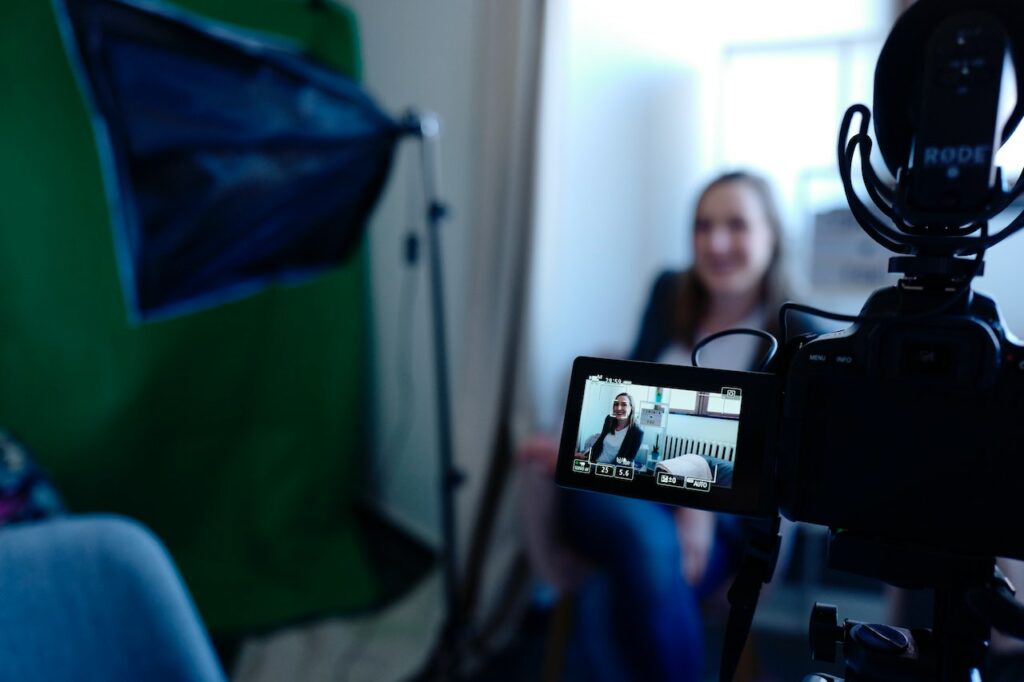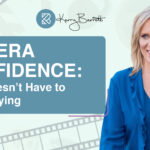
You know the feeling: your throat is dry, your underarms are sweaty, and your face feels bright red … and here are the cameras to capture your terror on video for all to see!
You’re not alone! Fearing to be caught on video is common. Hating the way you look on video is, if possible, an even more frequent occurrence. For many executives, small business owners, and others, video is a fact of life, and one that they’ve resigned themselves to hating.
But would it surprise you to learn that many people who look calm & composed, engaging & energetic on camera also struggle with these fears? Believe it or not, you can overcome the fear of being on video. Unfortunately, it’s not always a quick and easy process, but it is quick and easy to get started! Here are three tips to help you start to learn to love being in front of the camera.
Step One: Practice, Practice, Practice
I know, I know: you don’t want to. I get it, I really do. But a huge part of discomfort in front of the camera is, quite simply, from lack of practice. You need to get comfortable with the distraction of the camera, with learning to look into it and to ignore it. Practicing also gives you a chance to think carefully and identify what aspects of being on camera you dislike most. Is it what you think you look like or how you sound? Is it just in the moment, but you’re okay with the end result? Maybe you have a nervous habit that comes out in force when the camera is running. Whatever makes you afraid of being on camera, taking time to practice can help desensitize you to the discomfort and also identify it.
Step Two: Consider the Context
This might seem like an obvious question, but why will you be on video? In many cases, once we move past fear of being on camera, there’s a lot of discomfort to be worked through as well. Being on Zoom for sales calls or executive meetings? Standing on stage to give large recorded lectures? Being interviewed (or doing the interviewing)? Helping to provide a public face for your company’s social media presence? Each of these contexts will be more effective and easier when you are comfortable in front of the camera, but they also have very different needs.
This step doesn’t magically solve any of your problems on its own, but it can help you identify what things you need to focus on to increase your comfort. If you’re going to be doing social media, you’re going to want to practice with your phone. If you’re going to be on stage, consider how you occupy space while on camera. Doing Zoom calls? You may want a special computer setup for meetings that allows you to see what you need to see and have your camera at a flattering angle that makes you feel confident.
Step Three: Find Your Camera Tradition
Easier said than done, right? The key here is to find something that you can link, consciously or subconsciously, to being on camera. Maybe it’s a signature makeup or jewelry item that you put on before you start. Maybe it’s a mantra or power move. Heck, maybe it’s your “lucky camera socks”! Some people like a post-camera tradition, like buying yourself flowers to celebrate afterward. The key is finding something that gives you a little serotonin boost, that you can start to associate with being on camera. Slowly but surely, it will start to chip away at that fear.
I know this just scrapes the surface, but you’ll be surprised at how much these three starting points can help you to feel more confident in front of the camera. Ready for the next step? Check out my classes and learn how to advance your Video IQ further!




